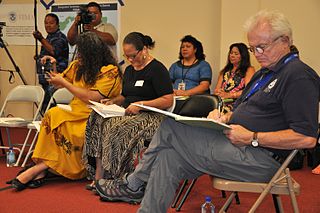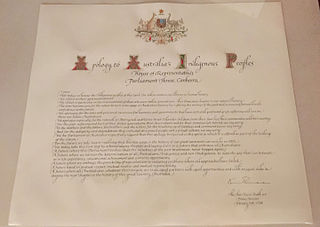
Public relations (PR) is the practice of managing and disseminating information from an individual or an organization to the public in order to influence their perception. Public relations and publicity differ in that PR is controlled internally, whereas publicity is not controlled and contributed by external parties. Public relations may include an organization or individual gaining exposure to their audiences using topics of public interest and news items that do not require direct payment. The exposure is mostly media-based, and this differentiates it from advertising as a form of marketing communications. Public relations aims to create or obtain coverage for clients for free, also known as earned media, rather than paying for marketing or advertising also known as paid media. But in the early 21st century, advertising is also a part of broader PR activities.
The reputation or prestige of a social entity is an opinion about that entity – typically developed as a result of social evaluation on a set of criteria, such as behavior or performance.
Blame is the act of censuring, holding responsible, or making negative statements about an individual or group that their actions or inaction are socially or morally irresponsible, the opposite of praise. When someone is morally responsible for doing something wrong, their action is blameworthy. By contrast, when someone is morally responsible for doing something right, it may be said that their action is praiseworthy. There are other senses of praise and blame that are not ethically relevant. One may praise someone's good dress sense, and blame their own sense of style for their own dress sense.
Crisis management is the process by which an organization deals with a disruptive and unexpected event that threatens to harm the organization or its stakeholders. The study of crisis management originated with large-scale industrial and environmental disasters in the 1980s. It is considered to be the most important process in public relations.

Corporate social responsibility (CSR) or corporate social impact is a form of international private business self-regulation which aims to contribute to societal goals of a philanthropic, activist, or charitable nature by engaging in, with, or supporting professional service volunteering through pro bono programs, community development, administering monetary grants to non-profit organizations for the public benefit, or to conduct ethically oriented business and investment practices. While once it was possible to describe CSR as an internal organizational policy or a corporate ethic strategy similar to what is now known today as Environmental, Social, Governance (ESG); that time has passed as various companies have pledged to go beyond that or have been mandated or incentivized by governments to have a better impact on the surrounding community. In addition, national and international standards, laws, and business models have been developed to facilitate and incentivize this phenomenon. Various organizations have used their authority to push it beyond individual or industry-wide initiatives. In contrast, it has been considered a form of corporate self-regulation for some time, over the last decade or so it has moved considerably from voluntary decisions at the level of individual organizations to mandatory schemes at regional, national, and international levels. Moreover, scholars and firms are using the term "creating shared value", an extension of corporate social responsibility, to explain ways of doing business in a socially responsible way while making profits.

A crisis is any event or period that will lead to an unstable and dangerous situation affecting an individual, group, or all of society. Crises are negative changes in the human or environmental affairs, especially when they occur abruptly, with little or no warning. More loosely, a crisis is a testing time for an emergency.
Impression management is a conscious or subconscious process in which people attempt to influence the perceptions of other people about a person, object or event by regulating and controlling information in social interaction. It was first conceptualized by Erving Goffman in 1959 in The Presentation of Self in Everyday Life, and then was expanded upon in 1967.

A humanitarian crisis is defined as a singular event or a series of events that are threatening in terms of health, safety or well-being of a community or large group of people. It may be an internal or external conflict and usually occurs throughout a large land area. Local, national and international responses are necessary in such events.

Internal communications (IC) is the function responsible for effective communications among participants within an organization. The scope of the function varies by organization and practitioner, from producing and delivering messages and campaigns on behalf of management, to facilitating two-way dialogue and developing the communication skills of the organization's participants.

An apology is an expression of regret or remorse for actions, while apologizing is the act of expressing regret or remorse. In informal situations, it may be called saying sorry. The goal of apologizing is generally forgiveness, reconciliation and restoration of the relationship between the people involved in a dispute.
Corporate communication(s) is a set of activities involved in managing and orchestrating all internal and external communications aimed at creating a favourable point of view among stakeholders on which the company depends. It is the messages issued by a corporate organization, body or institute to its audiences, such as employees, media, channel partners and the general public. Organizations aim to communicate the same message to all its stakeholders, to transmit coherence, credibility and ethics.
The public relations officer (PRO) or chief communications officer (CCO) or corporate communications officer is a C-suite level officer responsible for communications, public relations, and/or public affairs in an organization. Typically, the CCO of a corporation reports to the chief executive officer (CEO). The CCO may hold an academic degree in communications. A Public Relations Officer has a positive public opinion of an organization and increased brand knowledge as their first concern. They access and monitor their client's online presence to prepare the right message to convey. They can also coach clients on the importance of self-image and how to communicate with the media. A Public Relations Officer aims to positively handle and communicate information internally and externally.
Ian Irving Mitroff is an American organizational theorist, consultant and professor emeritus at the USC Marshall School of Business and the Annenberg School for Communication at the University of Southern California He is noted for a wide range of contributions in the field of organizational theory from contributions on strategic planning assumptions and management information systems, to the subjective side of the workplace and spirituality, religion, and values.
Crisis communication is a sub-specialty of the public relations profession that is designed to protect and defend an individual, company, or organization facing a public challenge to its reputation. Crisis communication is aimed at raising awareness of a specific type of threat, the magnitude, outcomes, and specific behaviors to adopt to reduce the threat. The communication scholar Timothy Coombs defines crisis as "the perception of an unpredictable event that threatens important expectancies of stakeholders and can seriously impact an organization's performance and generate negative outcomes" and crisis communication as "the collection, processing, and dissemination of information required to address a crisis situation."
Risk communication is a complex cross-disciplinary academic field that is part of risk management and related to fields like crisis communication. The goal is to make sure that targeted audiences understand how risks effect to them or their communities by appealing to their values.
Stakeholder management is a critical component in the successful delivery of any project, programme or activity. A stakeholder is any individual, group or organization that can affect, be affected by, or perceive itself to be affected by a programme.
The Excellence theory is a general theory of public relations that “specifies how public relations makes organizations more effective, how it is organized and managed when it contributes most to organizational effectiveness, the conditions in organizations and their environments that make organizations more effective, and how the monetary value of public relations can be determined”. The excellence theory resulted from a study about the best practice in public relations, which was headed by James E. Grunig and funded by the Foundation of the International Association of Business Communicators (IABC) in 1985. Constructed upon a number of middle-range theories, and tested with surveys and interviews of professionals and CEOs in the United States, the United Kingdom, Canada, and South Korea, the Excellence theory provides a “theoretical and empirical benchmark” for public relations units.
Introduced by William Benoit, image restoration theory outlines strategies that can be used to restore one's image in an event where reputation has been damaged. Image restoration theory can be applied as an approach for understanding both personal and organizational crisis situations. It is a component of crisis communication, which is a sub-specialty of public relations. Its purpose is to protect an individual, company, or organization facing a public challenge to its reputation.
Compellence is a form of coercion that attempts to get an actor to change its behavior through threats to use force or the actual use of limited force. Compellence can be more clearly described as "a political-diplomatic strategy that aims to influence an adversary's will or incentive structure. It is a strategy that combines threats of force, and, if necessary, the limited and selective use of force in discrete and controlled increments, in a bargaining strategy that includes positive inducements. The aim is to induce an adversary to comply with one's demands, or to negotiate the most favorable compromise possible, while simultaneously managing the crisis to prevent unwanted military escalation."
Discourse of renewal is a theory in crisis communication that seeks to establish and emphasize "learning from the crisis, ethical communication, communication that is prospective in nature, and effective organizational rhetoric.”